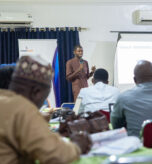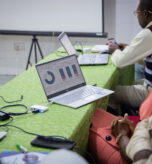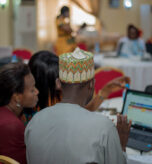World Immunization Week celebrated every year highlights the collective action needed to protect people from vaccine-preventable diseases. This year’s theme, ‘The Big Catch-Up’, aims to rapidly increase progress in essential immunization to reach millions of children who missed out on vaccines, restore coverage to 2019 levels, and build lasting protection. The goal is for more people and communities to be protected, allowing them to live healthier, happier lives [1].
The history of immunization – the protection of people against disease through the administration of vaccines (vaccination) – is a long and fascinating one, beginning around the 15th century with the intentional exposure of healthy people to smallpox to build their immunity against the disease, a practice known as variolation. By the 18th century, smallpox inoculation had reached Europe, and Benjamin Jesty’s hypothesis that infection with cowpox (a similar but milder form of the disease) could protect a person from smallpox had begun to gain widespread popularity.
In 1796, English physician Edward Jenner inoculated 8-year-old James Phipps with matter collected from a cowpox sore, and later with matter from a human smallpox sore, making Phipps the first human to be immunized against smallpox[2]. The journey continued with other significant breakthroughs, including Louis Pasteur’s development of the first laboratory-produced vaccine in 1872, and Jonas Salk’s creation of the first effective polio vaccine in 1955 with mass trials involving over 1.3 million children taking place in 1954.
By 1960, a second type of polio vaccine, developed by Albert Sabin, was approved for use, which was live-attenuated and could be given orally. The oral polio vaccine (OPV) was first tested and produced in the Soviet Union and Eastern Europe, with Czechoslovakia becoming the first country in the world to eliminate polio [3].
In 1967, the World Health Organization (WHO) announced the Intensified Smallpox Eradication Programme, which aimed to eradicate smallpox in more than 30 countries through surveillance and vaccination [4]. Smallpox had been mostly eliminated in Western Europe, North America, and Japan by this time, and following the announcement, there was unprecedented global solidarity with the United States and the Soviet Union united in support of the programme, despite the Cold War.
Throughout history, infectious diseases have taken a devastating toll on human life, leaving behind trails of suffering, death, and despair. But with the advent of vaccines, we see a glimmer of hope emerging amidst the darkness of pandemics and outbreaks. By providing immunity against a range of illnesses, vaccines have saved lives and prevented the spread of disease [5]. From the eradication of smallpox to the current global efforts to curb the spread of COVID-19, they have become a cornerstone of public health, revolutionizing the way we prevent and treat infectious diseases [6].
According to the WHO, vaccines prevent an estimated 2-3 million deaths per year, and have proven to be particularly effective in reducing child mortality rates. The introduction of the measles vaccine, for instance, led to a 73% reduction in measles deaths between 2000 and 2018, while the rotavirus vaccine led to a 30% reduction in rotavirus-related deaths in children under five years of age [7].
Vaccination plays a crucial role in preventing outbreaks of infectious diseases. When large numbers of people are immunized against a particular disease, it becomes more difficult for the disease to spread within a population. This phenomenon is known as herd immunity. High vaccination rates are particularly important in preventing outbreaks of diseases that are highly contagious or have high morbidity and mortality rates. Perhaps the most extraordinary accomplishment related to vaccines and immunization programs is the global eradication of smallpox, which was extinguished from the planet through an intentional, organized, and massive undertaking of governments and nongovernmental organizations throughout the world. Thus, it suffices to say that much more than personal immunity, herd immunity as an added value of vaccination is perhaps one of the most important benefits [8].
Despite the numerous benefits of vaccination, vaccine hesitancy remains a significant challenge. Misinformation and misconceptions about vaccines, as well as concerns about vaccine safety and effectiveness, have often fueled the resistance to vaccines by many [9]. Addressing this requires a multifaceted approach that involves education, communication, and community engagement. Health authorities and healthcare providers can play a critical role in addressing vaccine hesitancy by providing accurate and reliable information about vaccines, addressing concerns and misconceptions, and engaging with communities to build trust and confidence in vaccination [10].
In Nigeria, Sydani has continued to play a pivotal role in improving vaccination rates, increasing awareness and access, and addressing vaccine hesitancy through high-level technical support to the National Primary Health Care Agency (NPHCDA) on strategy development, resource mobilization, and crisis communications.
Our collaboration with international donors such as Gavi – the vaccine alliance, the United States Centre for Disease Control and Prevention (US CDC), the Bill and Melinda Gates Foundation, and the Integrated Health Project (IHP) of the United States Agency for International Development (USAID) has enabled the implementation of key interventions across Nigeria including the Vaccine Hesitancy Study, Support for Covid-19 Implementation Project (SCOVIP), Vaccination Ramp-up Project, Social Listening Project, Listening for Impact Project (LIP), Southern Religious and Traditional Leaders Engagement (SoRTLE), and Cold Chain Equipment Optimization Project (CCEOP), all of which have significantly improved vaccination rates in the country.
By working closely with both national and subnational health authorities, healthcare providers and the media, Sydani remains at the forefront of driving change and providing effective solutions to overcome the challenges posed by vaccine hesitancy.
Undoubtedly, immunization remains powerful in promoting public health and preventing outbreaks of infectious diseases. In fact, routine immunization of children has been one of the most successful interventions to the problem of child mortality. The COVID-19 pandemic has also highlighted the importance of strong immunization programs and the need to continue to address vaccine hesitancy. By working together to address vaccine hesitancy, investing in immunization programs, and ensuring equitable access to vaccines, we can work towards a future where no one suffers or dies from vaccine-preventable diseases [11].
Thus, as we celebrate World Immunization Week this year, it is important to acknowledge the incredible progress made so far and recommit to expanding access to life-saving vaccines for all. Together, we can make a difference in protecting the health and well-being of people everywhere.
REFERENCES
1. WHO Newsroom. World Immunization Week 2023. https://www.who.int/news-room/events/detail/2023/04/24/default-calendar/world-immunization-week-2023
2. WHO Newsroom. A Brief History of Vaccination. https://www.who.int/news-room/spotlight/history-of-vaccination/a-brief-history-of-vaccination
3. WHO Newsroom. History of Polio Vaccination. https://www.who.int/news-room/spotlight/history-of-vaccination/history-of-polio-vaccination
4. WHO Newsroom. Smallpox. https://www.who.int/teams/health-product-and-policy-standards/standards-and-specifications/vaccine-standardization/smallpox
5. WHO Newsroom. Fact Sheets on Measles. https://www.who.int/news-room/fact-sheets/detail/measles
6. MSSNY. Media Alert-Press Release. https://www.mssnyenews.org/special-announcements/press-releases/vaccines-are-the-very-cornerstone-of-public-health-2/
7. Schuchat, A. (2011). Human Vaccines and Their Importance to Public Health. Procedia in Vaccinology, 5, 120-126. https://doi.org/10.1016/j.provac.2011.10.008
8. C. Rodrigues, C. M., & Plotkin, S. A. (2020). Impact of Vaccines; Health, Economic and Social Perspectives. Frontiers in Microbiology, 11. https://doi.org/10.3389/fmicb.2020.01526
9. WHO Newsroom. Vaccine hesitancy: A growing challenge for immunization programmes
10. Dubey, V. (2019). Addressing vaccine hesitancy: Clinical guidance for primary care physicians working with parents. Canadian Family Physician, 65(3), 175-181. https://www.ncbi.nlm.nih.gov/pmc/articles/PMC6515949/
11. UNICEF. Immunization. https://www.unicef.org/immunization




